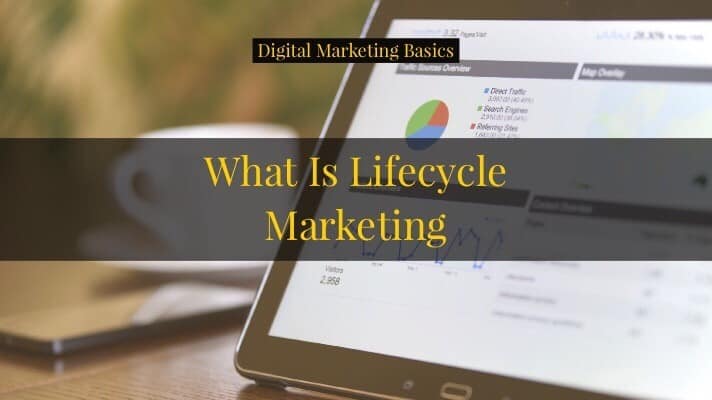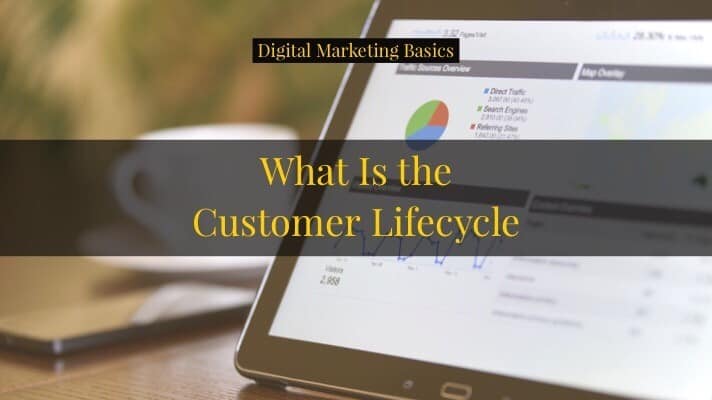Lifecycle marketing is a type of marketing that uses the customer lifecycle to determine what and how you communicate with your prospects and customers.
Depending on where your audience is at any given moment, the communication they receive from you will be different. It’s one of the most effective approach to digital marketing because the message is highly dependent on where the customer is right now.
Have you ever called a fast food restaurant to have something delivered?
What’s the first thing they ask you?
Most of the time, they ask you for your phone number or your name.
They use this to search their database to determine if you have existing purchases from them (i.e. a customer) or if this is the first time you’re ordering. This will determine what they will say next.
So, if you’re a customer already, they just verify your name/address, then proceed with the order. But if you’re calling for the first time, they’d ask for your complete address and other relevant information before proceeding with getting your order.
Now, imagine if they don’t screen at the beginning of the call.
Each time you call, you’d have to repeat the same information over and over. Ordering will take a lot of time and will only end up with you frustrated.
The way these fast food restaurants process orders is a form of lifecycle marketing. The message they communicate differs whether you’re at the first stage or the middle stage or the last stage.
But, lifecycle marketing is more complex than that.
For B2B organizations, the buying cycle usually takes weeks and months. It’s not a simple 2-minute phone call where you can get to say what you want then get it 30 minutes later. B2C organizations also have complex buying cycles.
Usually, the higher monetary value is, the longer and more complex the process is.
5 Steps to Effective Lifecycle Marketing
So, how do you implement an effective lifecycle marketing?
1. Determine your own lifecycle stages
In a previous post, I wrote about the standard lifecycle stages. If your organization has this already setup, then that’s great. If not, read that article first.
If you already have different sales stages, you can use that as a starting point.
2. Define the criteria/action/behavior for each stage
The most important part of this exercise is to make sure you define exactly what action or criteria you need for each stage.
Here’s an example of how this works and why it’s important:
- A subscriber is anyone who joins your email list.
- A lead is someone who downloaded a marketing offer.
- A marketing qualified lead (MQL) is someone who downloaded your software, requested a demo, or downloaded any one of your case studies.
- and so on.
Define each stage properly so you avoid confusion.
But the most important part here is that you communicate the established definitions to everyone who has any interaction with customers. Usually, these are the marketing, sales, and customer service teams.
Using this example, a proper lifecycle marketing strategy will not send communications about your products and discounts to your subscribers. They are not in a stage that is ready to receive those types of communication. And if they did, it will only turn them off.
On the other hand, a standard promotional campaign for 30% off should not be sent nor seen by your customers as well — especially if they bought your product at full price.
3. Create content/marketing offers for each lifecycle stage
For each stage in the customer lifecycle, create content or marketing offers that, after completing/availing it, will move them to the next stage of the lifecycle.
Let’s say you sell coffee equipment like drip machines, Aeropress, and water kettles.
You have a blog where people can find everything they need to know about brewing the perfect cup of coffee.
Naturally, you write about coffee and where it comes from. This includes how different altitudes affect the taste of coffee, what coffee cherries are, the different types of processing, how long it takes to grow coffee, etc.
You also have content about brewing your own coffee at home using Aeropress / V60 / French Press / Regular Drip machine. You share about grinding your own beans at home, the “right” size for each brewing method, water temperature and how it affects your coffee, and many more.
Continuing from the previous section, you can imagine why a blog subscriber might not be interested in your products as they might only be interested in your content and learning more about great coffee.
Again, you can only write about how great your products are, but that won’t be as effective as capturing a bigger audience.
This concept is explained in detail in my post about the 5 stages of awareness.
Writing about your products only without talking about coffee doesn’t flow together. It would only make your products seem irrelevant. It’s always better to write about something that matters to your customers, not just you.
4. Automate your marketing
The main goal of lifecycle marketing is to give your prospects and customers the experience they want, need, and expect.
And the only way to scale your business is to automate your marketing. This is done through lead nurturing.
For example, you setup a lead nurturing campaign that sends marketing offer downloads every 2 weeks. This is sent to your subscribers so that after downloading an eBook, they become a lead.
Once they become a lead, two things happen: (1) they are removed from the subscriber-to-lead nurturing automation and (2) they are enrolled in the lead-to-MQL nurturing campaign.
What that means is they will no longer receive marketing offer downloads every two weeks. Instead, what they will receive are communications designed to move them to the next stage — offer to download a software/case study/demo request.
5. Improve and update every quarter
If you are applying a content pillar approach, every marketing offer you create will have its own email series. You can use these to update your existing nurturing sequences or create a new one if it’s for a different stage.
For example, you published a new case study. You can then update your lead-to-MQL sequence to include an invite to download this case study.
So, what are you going to do next
Applying lifecycle marketing is one of the most effective shift you can do to your digital marketing. I shared how you can do this via email in this post, but lifecycle marketing doesn’t end there.
The trend nowadays is to use an omni-channel approach where you use different channels to engage with your prospects and customers while still applying lifecycle marketing. I’ll share more about this in future posts.
Are you using lifecycle marketing right now? What results have you seen since you implemented it? If you see the value of lifecycle marketing but having trouble getting started, feel free to reach out in the comments section below.

